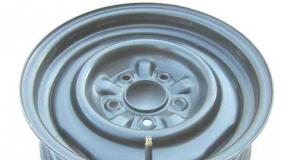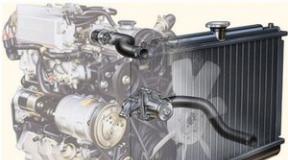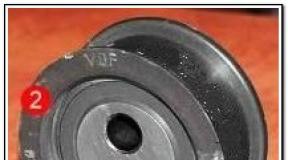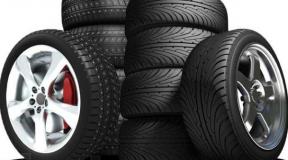ephedra extract. Fat burners with ephedra - a powerful stimulant for weight loss
Most people on this planet have certainly heard of the positive effects ephedrine has on energy expenditure and fat burning. However, even now, ephedra is still a very mysterious dietary supplement. There is a lot of information about synthetic ephedrine, but it is even ridiculous to compare it with its plant equivalent. Let's figure out what science knows about this most interesting herbal supplement.
Fat burning extract
Ephedra is the most popular thermogenic food supplement. Ephedra is a herbal extract that is extracted from a plant mahuang, which grows in Asia, Europe and the United States.
The synthetic drug ephedrine is obtained from the plant equivalent. In medical circles, the stimulant ephedrine is known as a beta-2 agonist. However, the results of recent studies suggest that synthetic ephedrine also affects beta-3 receptors, which are mainly active in white adipose fibers. Natural or synthetic agents that act on the beta-2 and beta-3 receptors are considered the best for weight loss.
Ephedra is made up of five different substances called alkaloids. The most studied of these is the alkaloid pseudoephedrine, which is one of the active ingredients in many drugs. The mahuang plant contains the following alkaloids: ephedrine, norephedrine, pseudoephedrine, methylephedrine and norpseudoephedrine. Ephedra is a dietary supplement that typically contains 6-8% alkaloids.
What is the difference between ephedra and ephedrine
Many countries, such as the United States, ban the sale of synthetic ephedrine. But the distribution of plant alkaloids is allowed. Knowing that the alkaloids contained in ephedra are exactly the same as in pure synthetic ephedrine, let's see if the plant equivalent has the same properties as synthetic ephedrine. Moreover, the results of scientific research have been published more than enough.
In North America, the mahuang plant is the main source of alkaloids, which are further used in the manufacture of food supplements. In order for us to understand how these substances are metabolized in the body in terms of concentration, it is necessary to understand what the term "half-life" means. The half-life is the time that the human body needs to process half the amount of the substance received initially. For example, if it is said that the half-life of a substance is 24 hours, then this means that exactly in a day exactly 50% of the amount that was the day before will remain in the body. After passing through these five cycles, the substance will completely disappear from the body. Will fall apart.
So, synthetic ephedrine, which is available in the form of tablets, has a half-life of 5.74 hours. Recently, experts working at the University of Arkansas found out what the half-life of plant ephedrine is. Participants in the experiment were given 4 capsules containing 19.4 mg of Ephedra Sinica. The scientists chose this dose because in a half-life study that had previously been conducted with synthetic ephedrine, its dose was 20 mg. During the experiment, doctors found that plant ephedrine, which was taken in almost the same dose as synthetic ephedrine, had a half-life of 5.2 hours.
A very interesting pharmacological experiment was conducted by scientists working at San Francisco General Hospital. Their goal was to evaluate heart rate and blood pressure in response to a single dose of Metabolift's popular herbal product Thermogenic Diet Formula, which is patented in the United States. Scientists also measured the time of maximum concentration of the product and the half-life. Since we are primarily interested in the half-life, we will focus on it.
One capsule of the product contained 100 mg of caffeine and 10 mg of ephedra alkaloids mixed with several accompanying ingredients. For scientific purposes, other participants in the experiment took the equivalent of 175 mg of caffeine and 23.7 mg of ephedrine alkaloids.
The average half-life of the Metabolift product was 6.06 hours. For 23.7 ephedrine alkaloids, the half-life was 40 minutes longer. True, it should be noted that the doses of the drug during the experiment were different. After the experiment, scientists came to the conclusion that the pharmacological parameters of these ephedrine alkaloids are almost the same as those obtained in the study of synthetic ephedrine.
The researchers also found that after 60, 90 and 120 minutes after taking the drug, there is a statically significant rise in blood systolic pressure. But such an increase is not clinical, since the total blood pressure does not go beyond the normal range. Diastolic pressure changed slightly. So, one dose of ephedra did not lead to clinical changes in blood pressure. And the half-life was about the same as that of synthetic ephedrine.
Clinical Studies of Herbal Ephedrine with Caffeine
To date, there are several published papers that present the results of research on the properties of a mixture of caffeine with a plant equivalent of ephedra. In one such study, scientists tested the effect of such a mixture on 167 volunteer participants. They divided them into two groups randomly. The first group took the vegetable equivalent of ephedrine mixed with caffeine. The second group took a placebo. All participants in the experiment ate as usual, but monitored their fat intake. They also walked three times a week for 30 minutes. Initially, all participants in the experiment were examined daily in the laboratory. Thereafter, examinations were carried out once a month. Some of the participants constantly wore devices that measure blood pressure throughout the day. Participants kept diaries in which they recorded heart rate and blood pressure readings. All this further helped scientists to evaluate side and subjective effects.
As a result of the experiment, it was possible to find out that taking a mixture of caffeine and vegetable ephedrine caused weight loss about 2 times greater than placebo. And the amount of fat lost is 11.6 to 1. The scientists also recorded slight changes in heart rate and blood pressure, but no arrhythmias were noted. It should be noted that 5 people refused to participate in the experiment, as they were afraid of a slight rise in blood pressure. Thereafter, no significant differences were seen between the two groups in blood pressure measurements. Participants in the experiment noted some side effects that appeared in two groups: increased heart rate, dry mouth and insomnia.
As a result, the scientists organizing the experiment came to the conclusion that if a healthy but overweight person, as directed by a doctor, takes herbal ephedrine mixed with caffeine, and combines this with physical activity and diet, it can have very high effectiveness without serious side effects. effects.
to be continued
Pharmacological group: alkaloids
Pharmacological action: sympathomimetic, stimulates alpha and beta adrenoceptors. Acting on varicose thickenings of efferent adrenergic fibers, it promotes the release of norepinephrine into the synaptic cleft. In addition, it has a weak stimulating effect directly on adrenoreceptors. Causes vasoconstrictor, bronchodilating and psychostimulating action. Increases total peripheral vascular resistance (OPSS) and systemic arterial pressure, increases the minute volume of blood circulation, heart rate and heart rate, improves AV conduction; increases the tone of skeletal muscles, the concentration of glucose in the blood. It inhibits intestinal peristalsis, dilates the pupil (without affecting accommodation and intraocular pressure). Stimulates the central nervous system, in terms of psychostimulating action it is close to phenamine. It inhibits the activity of MAO and catecholamine-O-methyltransferase. It has a stimulating effect on alpha-adrenergic receptors of blood vessels in the skin, causing constriction of dilated vessels, thus reducing their increased permeability, leading to a decrease in edema in urticaria.
Effects on receptors: alpha and beta adrenoreceptors (stimulant).
Ephedrine is one of the four active components of the ephedra plant. Ephedrine is able to stimulate weight loss by making more fat available for fuel, as well as by increasing body heat. It is implied that ephedrine speeds up the metabolism in humans by 5%.
Description
Ephedrine is a stimulant drug that belongs to a group of drugs known as sympathomimetics. In particular, it is an alpha- and beta-adrenergic agonist (selective beta-2 adrenoreceptor agonist). In addition, ephedrine enhances the release of norepinephrine. The action of this compound is similar to the main adrenergic hormone in the human body - epinephrine (adrenaline), which also acts on alpha and beta receptors. When administered, ephedrine significantly increases the activity of the central nervous system, and also stimulates other target cells.
Ephedrine can be used in sports.
With an increase in the amount of free fatty acids due to the breakdown of triglycerides in adipose tissue, the body temperature slightly increases (as a result of which the metabolism is stimulated), the level of fat decreases and the blood supply increases. It is also believed that ephedrine increases the anabolic effectiveness of steroids to some extent. The stimulating effect of this drug is also expressed in an increase in the force of contraction of skeletal muscles.
general information
Ephedrine is one of the four active components of the ephedra plant. Ephedrine is able to stimulate weight loss by making more fat available for fuel, as well as by increasing body heat. It is implied that ephedrine speeds up the metabolism in humans by 5%. By increasing the heat expended by the body, ephedrine also affects muscle cells and fat cells. Ephedrine in some cases also helps prevent the breakdown of muscle tissue. Ephedrine is able to enhance properties, and is usually included in the so-called "ECA" drugs (weight loss mixtures that include ephedrine, caffeine and aspirin). Ephedrine has almost no side effects, except that it can cause an increase in blood pressure, as well as an increase in blood glucose, but these effects disappear when the drug is stopped. Ephedrine in overdose is a hyperstimulant. Ephedrine is a well-researched and fairly safe compound, although not always effective. To increase efficiency and reduce the risk of side effects, the drug should be taken taking into account physical activity and diet. Also known as Ephedra Vulgaris, Ephedraceae, ma huang.
Not to be confused with Ephedron, Epinephrine
It is important to note! Ephedrine is a stimulant, and the ephedra plant is an even bigger stimulant.
Pharmacological action: fat burner Works well with: methylxanthines such as caffeine and theopillin (included in green tea). Particularly effective for
The fight against excess weight
Need to suppress appetite
Ephedrine is also able to increase dopamine levels in the brain and should be combined with caution with yohimbine. In the presence of heart disease, ephedrine should be taken only under the supervision of a physician.
Ephedrine: instructions for use
All of the following recommendations for use apply to the drug Ephedrine HCl In ECA-type preparations, the daily dosage of ephedrine is 20-24 mg three times a day. Ephedrine alone has shown positive results on the rate of fat metabolism in human studies at doses of 20-50mg three times a day. Higher doses (150mg) may cause headaches and mild hand tremors in some users. Ephedrine is usually consumed along with xanthine compounds - and sometimes. Caffeine greatly enhances the effect of ephedrine.
Story
Ephedrine is a long-established medical drug that has been used in the United States for many years, including as an ingredient in stimulants, appetite suppressants, and in the treatment of anesthesia-related hypotension. In recent years, there has been increased scrutiny of the ephedrine market in the United States due to the drug's potential use as a precursor to the production of methamphetamine. Given the high availability of ephedrine as an over-the-counter drug, clandestine manufacturers are well placed to use it for their own purposes. A trend has developed towards the purchase of a large volume of ephedrine at retail, and many States are faced with the need to create legislation to control the sale of ephedrine and similar substances used to create narcotic drugs. In 2006, a federal law was passed restricting the consumption and distribution of ephedrine in the United States. With methamphetamine addiction (and related crimes) rampant, some believe that ephedrine may soon be placed on the list of state-controlled substances. Despite tough measures, the substance is still available for sale without a prescription.
How shipped
Ephedrine (as ephedrine hydrochloride or ephedrine sulfate) is most often supplied in tablets of 25 or 50 mg each.
Origin and structure of ephedrine
Composition (ephedra)
Ephedrine is found in the Ephedra Sinica plant, also known as Ma Huang or Chinese ephedra. This is especially important because there is a whole species of Ephedrea in the Ephedraceae family, and ephedrine alkaloids that can burn fat are found only in Ephedra Sinica. The ephedra species includes 50 plants that grow throughout the world, many of them are adapted to semi-arid and desert conditions, some to the humid and temperate climates of the Mediterranean and North America. Ma Huang (Ephedra Sinica), marketed as a fat burner, contains:
Ephedra plants from North and South America make up about half of all existing species and do not contain a sufficiently large amount of ephedrine alkaloids, however, according to anecdotal evidence, they may contain pseudoephedrine. According to some studies, ephedra plants from North America contain neither ephedrine nor pseudoephedrine.
Ephedrine: composition (ephedrine alkaloids)
Ephedrine as a molecule has two chiral centers, and due to this, it has four variations (or four stereomers):
1R,2S (-)- ephedrine
1S,2S (+)- pseudoephedrine
1S,2R (+)- ephedrine
1R,2R (-)- pseudoephedrine
In addition, ephedrine and pseudoephedrine tend to lose their methyl group and become norephedrines, or methylate and create N-methylephedrine. Norephedrine and norpseudoephedrine are also known as phenylpropinolamine, or PPA.
Ephedrine: properties
Ephedrine can be stable in the urine for up to 9 months at temperatures ranging from -20°C to 37°C, or for 15 hours at 60-degree temperatures, which is equivalent to the temperature in the trunk or glove compartment of a car in the heat. Ephedrine was also found to be stable under 6 alternating freeze and thaw cycles.
Structural characteristics
Ephedrine is a sympathomimetic amine, similar in structure to amphetamine or methamphetamine. It has the chemical name (1R,2S)-2-(methylamino)-1phenylpropane1-0l.
Side effects
Ephedrine can cause a lot of unwanted side effects. The stimulating effect can cause hand tremors, tremors, sweating, heart palpitations, dizziness, and inner restlessness. When addiction occurs or the dose is reduced, these effects appear to a lesser extent. Simply put, if a person does not like the action, he is unlikely to like ephedrine, which has a stronger effect on the body. The mental and physical changes that occur as a result of taking this drug are very close to the changes observed when taken. When using the drug, there is a noticeable decrease in appetite, which is usually perceived as a positive effect. Ephedrine is a very common ingredient in appetite suppressants. With regular use of ephedrine, headaches and an increase in blood pressure can be observed. Users with thyroid disorders, high blood pressure, or heart problems should avoid taking this drug. Ephedrine is a CNS stimulant with the potential for fatal overdose. Overdose symptoms may include rapid breathing, abnormal blood pressure, palpitations, loss of consciousness, trembling, panic, extreme restlessness, severe nausea, vomiting, and diarrhea.
Ephedrine application
Ephedrine is used (off-label) among bodybuilders and athletes as a fat burning agent. The drug is usually used several times a day during drying at a dose of 25 to 50 mg at a time.
Pharmacology
Digestion and assimilation
A dose of 50 mg of ephedrine causes a decrease in the time of emptying the stomach of a person and reduces the time of digestion. Systemic absorption Ephedrine interacts directly with muscle cells and induces thermogenesis in myocytes. Also, ephedrine is able to reduce the excretion of nitrogen in the urine, which indicates the sparing effect of ephedrine on muscles. Ephedrine can also increase thermogenesis due to its vasoconstrictive properties (vascular thermogenesis). Ephedrine supplementation increases plasma, glucose, and C-peptide levels, depending on the ephedrine content of the formulation. Probably, the action of ephedrine is enhanced by methylxanthine drugs (such as caffeine and theophylline). The dosage of ephedrine//theophylline at 22mg/30mg/50mg, respectively, was twice as effective as ephedrine alone, but the combination of ephedrine/caffeine 20mg/200mg, respectively, showed the greatest effectiveness, which led to the creation of an ECA formulation, which included ephedrine/caffeine/aspirin dosed at 20mg/200mg/91mg respectively.
Impact on the body
Neurology
Ephedrine is the most effective stimulant during calorie restriction. The effect of stimulating brain activity is most powerful when combined with ephedrine.
Fat mass and obesity
Ephedrine: action
Ephedrine is able to simultaneously negatively affect all three subtypes of beta-adrenergic receptors in brown adipose tissue, which leads to an increase in thermogenesis without significant activation of the alpha-adrenergic receptor class and may also be able to counteract the activation of agonists of these receptors.
Metabolic rate and oxygen consumption
Human studies have shown that oxygen consumption after an initial dose of ephedrine (20 mg) rises 30-60 minutes after ingestion in all cases (with additional activity in stimulant intolerant individuals), although continuous use of ephedrine slows the expected fall oxygen consumption 1-3 hours after ingestion. This suggests that ephedrine provides more fat-burning benefits when used over a longer period (4-12 weeks) rather than intermittently, and it is possible that a mechanism for increased beta-adrenergic sensitization may be at the root of this. Ephedrine may increase metabolic rate independent of exercise; this is different from, which acts as a fat burner only when there is physical activity. By the way, this may be the reason why the combination of ephedrine and acts in synergy with physical activity, leading to an increase in oxygen consumption. The ephedrine combination is equally effective (or even more effective) than dexfenfluramine 15 mg when taken for 12 weeks. It has been noted that caffeine can, however, increase the effect of ephedrine independent of physical exertion, and that this effect is also seen with green tea. This suggests that methylxanthine compounds (through an increase in adrenaline levels) cause an increase in the action of ephedrine. Previous animal studies have shown a 10% increase in oxygen consumption with ephedrine supplements, however human studies are more variable (3.6%, 10.7% (c) and 7.1%). Various increases have been observed in studies using indirect calorimetry, eg 30.1 ± 5.4 kcal/3 hours with 20 mg ephedrine + 200 mg and 22.7 ± 7.7 kcal/3 hours with half the dose of ephedrine. Metabolic rate, thermogenesis, and oxygen consumption are increased with ephedrine supplementation. This increase is enhanced by taking or other xanthine compounds. The effect is more pronounced in obese people, and most of all - during periods of calorie restriction. The increase in metabolic rate is estimated to be around 5-12%.
Ephedrine: fat burner
Some studies have confirmed that ephedrine (together with) can have a long-term positive effect in the fight against diencephalic obesity. Studies of overweight women have shown that three doses of ephedrine at a dose of 20 mg lead to a weight loss of 2.5 kg in 4 weeks and 5.5 kg in 12 weeks, regardless of changes in diet and exercise. From this it follows that the result of taking ephedrine decreases over time (regardless of oxygen consumption). There have been studies of ECA-type drugs that have shown that without intentional calorie restriction, obese people lost 2.2 kg of weight in 8 weeks, while the placebo result was a weight loss of 0.7 kg. After revealing the drug to the subjects, the result of 2.2kg increased to 3.2kg. With calorie restriction, in 16 weeks EC reduces weight in obese people by 3.4kg more effectively than placebo, and 30-60mg of ephedrine (together with 300-600mg) in 20 weeks reduces weight in adolescents by 5.9kg more. Moreover, the result of long-term use of ephedrine (5 months) is a permanent weight loss (5.2kg), compared with the control group (-0.03kg). In some studies where differences in weight loss among subjects are not statistically significant, positive trends in body composition are an important factor.
Physical exercise and skeletal muscle
Skeletal muscle hypertrophy
Ephedrine, being a beta-adrenergic agonist, can preserve muscle mass by reducing nitrogen excretion from the body (and titrating the nitrogen balance in a positive direction). Studies show a decrease in urinary nitrogen after use of ephedrine, and in at least one case there was no weight loss due to fat loss, concomitant with an increase in muscle mass, where in the last eight weeks the subject lost 4.5 kg of fat and 2.8 kg of muscle mass. These figures may increase when observing women who are initially obese. Skeletal muscle increases the fat-burning potential of ephedrine by 50%, since it mainly acts on the brown fat store and skeletal muscle itself.
ephedrine in bodybuilding
As part of the study, nine healthy, trained men took 300mg and 60mg of ephedrine chinensis (unaware of the ephedrine content) 60 and 150 minutes prior to physical testing - one set of bench press and vertical pull, however, in addition to increasing diligence and concentration during exercise, the effect of taking the drugs was no different from the effect of taking 300 mg of sugar (placebo). They then ran another study assessing energy return during weight-bearing exercise, this time with an increase in ephedrine dosage (0.8mg/kg 90 minutes before leg exercise: bench press multiple sets), and subjects given ephedrine were able to do 3 more sets. than those who received placebo (16 to 13), and in combination with the result increased by another 6 approaches (19 to 16), however, with a smaller increase in approaches (1 to 2, respectively); the researchers believe that fatigue may have played a role in multiple sets, and only the results obtained in the first stage of the study matter (whereas the subsequent two stages, which included a two-minute break, are statistically insignificant). A single dose of 24mg of ephedrine given to healthy trained men did not produce any increase in energy. Dynamometer studies have shown no energy gain from 60mg ephedra chinensis (together with 300mg), while ephedrine has shown energy gain during the 30 second Wingate test (5 and 10 seconds only) within 90 minutes of 1mg/kg administration ; although such a study has been criticized for being too small (less than 1% improvement over a 30 second period), making the risk of high doses of ephedrine not justified. The increase in energy with lower doses of ephedrine is not significant, while higher doses (0.8-1mg/kg) gave more significant results when administered 90 minutes before exercise. However, due to unjustified risks and side effects, the advisability of using high dosages is questioned by some researchers.
Physical Endurance
In a cycling speed test (in which placebo resulted in 12.6 minutes), 1mg/kg ephedrine reduced fatigue by 19%, which is statistically insignificant, however, together with 5mg/kg, the effect increases to 39%, which is more significant result. A similar result has been achieved by other researchers using similar dosages, and an increase in heart rate and a decrease in the feeling of fatigue during exercise have also been noted. Another study was conducted - a 10-kilometer equipped run (11 kg) after taking 0.8 mg / kg of ephedrine, which showed that running speed increased by 2.8% in subjects who took ephedrine compared to those who took placebo (similar to taking and ephedrine), as a result, the pace of running increased in the last 5 km, but the VO2max test did not show any significant changes; this is due to an increase in serum free fatty acids and modulation of catecholamines (less adrenaline and more dopamine). Ephedrine has been reported to increase endurance during exercise, which may be due to an increase in serum free fatty acids and possibly a reduction in fatigue during exercise.
Interaction with hormones
Estrogen
Daily intake of 0.5 mg/kg of ephedrine has an anti-estrogenic effect in mice and is more effective than ephedra and Synephrine in this respect.
The cardiovascular system
Blood pressure
Many human studies report a slight increase in systolic blood pressure ranging from 5 to 23 mmHg, with no effect on diastolic pressure. This effect was short-lived and was caused by exposure to ephedrine. Over a long period of time (8-12 weeks), ephedrine lowers blood pressure, although this is due to weight loss. Sometimes, however, blood pressure does not change. For people with high blood pressure who do not lower it, taking ephedrine can be problematic, but it is believed that over time the pressure may decrease, along with weight loss. Apparently, taking ephedrine in controlled dosages does not affect the rate of heart contractions. Its change is usually associated either with anxiety or with an excessive amount of adrenaline, which is observed when ephedrine and are taken together.
Heartbeat and heart health
The study found a decrease in serum potassium levels with the use of ephedrine (20 mg x 3). On average, this decrease was in the range of 4.1 mmol to 3.7 mmol, although this figure decreased during continuous use of the drug. Other studies have shown a less significant increase in adrenaline levels, although this increase was not observed in the urine, but a decrease in nitrogen levels was observed, indicating an improvement in nitrogen balance, and therefore an increase in the ability of the muscles to store ephedrine (50 mg three times a day).
Cardiotoxicity and overdose
At high doses (50mg/kg body weight) of ma huang (ephedra) or 25mg/kg of ephedrine, clinical and biological signs of toxicity are observed. A dosage of 12.5mg of Ma Huang per kilogram of body weight (equivalent to 6.25mg/kg of ephedrine) along with is associated with minimal signs of toxicity. A single forced dose of 25 mg of the drug per kilogram of body weight (14 times the norm for humans) is fatal to rats. In rat studies, cardiotoxicity is more pronounced in older individuals. )]
Lipoproteins and triglycerides
Ephedrine (in collaborative studies with ) lowers HDL-C in a low-calorie diet without significantly affecting total body cholesterol levels.
Nutrient Interactions
Ephedrine, caffeine, aspirin (ECA)
ECA-type drugs were first proposed in 1989 and tested in 1990 as dietary supplements that interact with each other. By that time, it was already known that xanthine compounds (including caffeine) together with 22 mg of ephedrine accelerate metabolism by about two times, and in animals cause a decrease in appetite. Caffeine can speed up metabolism on its own, however, when combined with ephedrine, they enhance each other's effects. The combination of two drugs is associated with a more effective acceleration of metabolism than taking both drugs separately. This is thought to be due to adenosine antagonism, while another theory (phosphodiesterase inhibition) is likely to fail in vivo due to the low cellular concentration of α not sufficient for significant inhibition. Caffeine acts in synergy with ephedrine in vivo and is widely used in weight loss studies in conjunction with diet or exercise, and some researchers believe that this combination is necessary for ephedrine's fat-burning effect to differ from the placebo effect. This may be of secondary importance for those who are not affected by ephedrine without co-administration of xanthine compounds. Simply put, those who do not respond to ephedrine do respond to the combination of ephedrine and xanthines. It has been calculated that the combination of ephedrine and xanthines is 64% more effective than the effect on the body of each separately. This effect is achieved by pharmacodynamic enhancement, and the combination of drugs does not change their pharmacokinetic profile in any way. According to the study, the combination and ephedrine does not affect diastolic blood pressure, while each drug alone does. This suggests that the combination of drugs does not affect systolic blood pressure any more than either of these drugs alone. Aspirin has an indirect effect through ephedrine, since aspirin by itself is not as effective in affecting weight change. Ephedrine reduces the weight of animals by 18%, while ephedrine in combination with analgin - by 27%. This combination works through prostaglandin inhibition, resulting in the release of adrenaline when ephedrine is taken. Aspirin (together with and ephedrine) is not able to significantly increase the thermal effect of food. The combination of ephedrine (25-50mg), (200mg) and (300mg) (“ECA”) is widely known to be an extremely powerful fat-burning agent and has wider uses than ephedrine alone. In this combination, ephedrine acts as a powerful thermogenic stimulant. helps inhibit lipogenesis by blocking the incorporation of acetate into fatty acids. The athlete can monitor body temperature as a marker for the correct operation of this combination. As a rule, when taking ECA, the temperature increases by 1 degree, which does not cause any noticeable inconvenience. The combination is taken 2-3 times a day for several weeks. When body temperature returns to normal, ECA is discontinued, as its effectiveness decreases. In order for the drugs to start working again at the optimal level, it is necessary to take a break of at least 4-6 weeks.
Ephedrine is also used by some professional athletes (including powerlifters) as a pre-workout or competition stimulant. A small increase in strength and energy can improve anaerobic performance and the end results of major lifts. It is also believed that the drug enhances brain activity, resulting in an increase in energy and improves the ability to focus on necessary tasks. To exert these effects, ephedrine is usually used in doses of 25-50 mg when needed. It is important to note that this compound is not used continuously as its effect decreases with habituation. In most cases, the drug is taken only 2 or 3 times a week, usually on days of special importance.
After several weeks of using the drug, it is better to take a break (at least for 1-2 months) in order to maintain its effectiveness at an optimal level.
Nicotine
Ephedrine and caffeine have been used in studies to reduce weight in smokers, cessation has been tried in combination to reduce weight gain, and although there has been some progress, ephedrine has not been particularly effective in weight loss.
Safety and toxicity
With proper supervision, the combination of ephedrine and is safe for adolescents (14-17 years). Some observations show that the effect of drugs does not differ from the placebo effect, although a meta-analysis showed a range from 2 to 3.5 units and found that the benefits of such therapy outweigh the costs of it. When using 20mg/200mg ephedrine/thrice daily for 24 weeks, no clinically significant withdrawal symptoms were observed.
Clinical Observations
It should be noted that, according to multiple indicators obtained during the study of subjects tolerant to ephedrine and patients who did not develop tolerance, no significant differences in the work of the cardiovascular system were observed. Moreover, a meta-analysis of 50 studies and 284 case histories submitted to the Food and Drug Administration showed that there was an association between ephedrine/ephedra use and increased heart rate, however, case histories are not sufficient evidence to draw general conclusions. More serious side effects were identified when analyzing data from the FDA on side effects, but this information could cause public panic. This analysis revealed only 284 eligible cases out of 18,000 (assuming ephedrine had been taken 24 hours prior to the examination). It follows that 98.5% of non-medical cases are due to hypochondria, although this does not rule out the possibility of real harm. In people who have taken drugs in the past, ephedrine can cause a stroke. At least one case of cardiac involvement was reported in a 44-year-old man, but the numbers were skewed by the use of many different drugs. Another case report mentioned the use of ephedra, xenadrine and hydroxycate for 2 years, which caused a coronary artery aneurysm, although this was due to xenadrine rather than ephedrine. In one case history, ephedrine was associated with the formation of kidney stones. Ephedrine alkaloids accounted for 95% of the weight of kidney stones in a man with one kidney who took 4 types of medications and suffered from kidney failure in the past. However, there have been "more than 200" other cases of kidney stones containing ephedra alkaloids. On at least one occasion, ephedrine has been used to commit suicide. The exact dosage is not known, but it significantly exceeded the dose recommended for therapeutic purposes.
No matter how hard you train, how you eat, and what supplements you take, losing weight is almost always a difficult task. The "drier" you get, the more you have to deal with hunger, the harder you train and the less you have to eat to burn fat further. This is why many people start using stimulant drugs like ephedrine. If you've been working out for a while in the gym, you've probably heard that this substance has downright magical properties in terms of fat burning.
Ephedrine suppresses appetite and also significantly increases the rate of metabolism and fat burning. This means that you will lose weight faster and it will be easier for you to stick to a rigid diet.
Manufacturers claim that ephedrine is as safe as caffeine. Moreover, the longer you take it, the higher its effectiveness (unlike the most popular stimulant in the world). But if you search the internet for reviews, you will find reviews from many users who claim that ephedrine is a very mediocre drug that is not so safe. Some people say that this substance can even increase the risk of anxiety, heart attack and stroke.
Whom to believe? How effective is ephedrine? How serious is itside effects and harm for health? And if it's safe how should it be taken ? The answers to these and many other questions can be found in our article onaction and use of ephedrine.Let's start with the definition of this drug.
Ephedrine - what is this and how does it work?
Ephedrine is a stimulant that increases the metabolic rate and therefore fat loss. In other words, it increases your body's energy expenditure, most of which comes from fat.
Ephedrine is obtained from the bush plant of the Chinese conifer (lat. Ephedra sinica), which grows in China. Due to the Latin name of the plant, the substance is sometimes called "ephedra".
Ephedra sinica makes breathing easier by relaxing the muscles around the airways, which is why it has long been used in traditional Chinese medicine to treat various ailments such as colds, coughs, and flu. In the West, ephedrine is sometimes included in the composition of anti-asthma drugs.
Ephedrine works by binding to receptors on cells that respond to chemicals called catecholamines such as epinephrine, norepinephrine, and dopamine.
When any of these molecules attach to cells, it activates the fight-or-flight response, which leads to an increase in heart rate, a decrease in hunger, and an increase in fat and glycogen burning.
Ephedrine also helps reduce body fat that is more resistant to mobilization than others (so-called "stubborn" or hard-to-remove fat) by increasing the activity of beta receptors, which causes the release of energy stored in fat cells.
Why take ephedrine?
Athletes use ephedrine for two key reasons:
1. It increases metabolic rate and fat burning.
2. It suppresses appetite.
There is also evidence that the substance can increase muscle strength, endurance, and power, as well as help maintain muscle mass while dieting. 1 It should be noted that the mechanism of the latter effects is still not entirely clear, and in general they have not been particularly studied.
Ephedrine may have muscle-preserving properties on its own, or this effect may simply be a by-product of its potential performance-enhancing properties (if you maintain a high training intensity while dieting, you're less likely to lose muscle). In any case, it is known that people who take ephedrine "drying" usually retain more muscle than those who do not.
Unlike many fat burners on the market, ephedrine is clear: it can definitely help you lose fat faster and therefore weight.
Studies have shown that the substance significantly increases fat burning, and also works synergistically with caffeine, which can also accelerate weight loss. In other words, when you combine these drugs, they help you lose fat faster than if you took them alone.
Scientists have found that the combination of ephedrine and caffeine can increase metabolism by 5%, resulting in an additional loss of approximately 150 grams of fat per week in the average person.
Of course, this does not fundamentally change the situation, but these energy costs are approximately equivalent to about 30 minutes of intensive walking per day. Not bad for a small tablet, right?
Ephedrine also has a unique property - its effect increases over time. 2
Unlike caffeine, which gradually loses its fat-burning potential (the body gets used to it), the effects of ephedrine are enhanced with continued use because it appears to sensitize the body to catecholamines.
This is especially useful when cutting down because the longer you are on a reduced calorie diet, the less energy your body uses at rest and during training. This is partly why people "inexplicably" stop losing weight after some time on the diet. The drug helps to overcome the plateau by affecting the basal metabolic rate (the amount of energy expended by the body at rest).
Ephedrine has another important effect on the body - it suppresses appetite. 3
Many people who use ephedrine for the first time do not feel hungry when eating only a few hundred calories per day (note that eating so little is not recommended). This effect fades over time, but remains quite noticeable.
Read also:
Is ephedrine safe?
Like any other stimulant, ephedrine is not without side effects, such as:
Increased heart rate and increased blood pressure;
Nausea;
Insomnia;
Dizziness;
Nervous excitement;
Tremor (shaking) of the hands. 4
While these side effects may seem rather ominous, they are shared to varying degrees with other stimulants such as caffeine and yohimbine. Side effects usually subside/disappear after the first week of taking the drug. 5
Why then is ephedrine often referred to as "dangerous" and put on a par with more serious drugs such as clenbuterol and 2,4-dinitrophenol (DNP)? There are several reasons for this.
1. Taking ephedrine is associated with some risks.
They may not be very serious, but in fact, the use of any drug (especially potent) is associated with certain risks. Some people simply do not tolerate ephedrine well and experience serious side effects. Therefore, since 2004, the FDA (US Food and Drug Administration) has registered more than 18,000 complaints from people using ephedrine.
However, most cases are associated with certain medical conditions, high dosages, and/or combinations of ephedrine with alcohol, pharmaceuticals (cold medicines), or drugs such as ecstasy.
2. Ephedrine has a bad reputation, unlike other stimulants.
After several people died after taking ephedrine, including 23-year-old baseball player Steve Behler, the FDA banned the substance from any supplements in 2004.
This has led to unfounded concerns about the safety of ephedrine. Deaths after caffeine overdose have not received such a resonance. 6 Millions of people abuse caffeine every day, without fear for their health and considering ephedrine "bad" mainly because it is found in some anti-asthma drugs and is less commonly used. What does science say about this?
Studies show that when used correctly, ephedrine is generally safe and does not cause serious side effects. 7
However, it is contraindicated if you have certain medical conditions (particularly heart conditions). High doses of ephedrine and/or its combination with alcohol, large amounts of caffeine or drugs can be dangerous and even fatal.
It should also be noted that most studies on ephedrine have only lasted a few weeks/months. Therefore, it is not known how the body will react when using the drug for a longer time. However, "drying" usually does not take more than 2– 3 months. Interruptions in the use of ephedrine can minimize the likelihood of any complications.
how many accept? Effective dose
The most common regimen for ephedrine for weight loss is three servings of 20-25 mg per day (morning, noon and early afternoon).
The standard ephedrine + caffeine combination includes the three servings of ephedrine listed above plus 200mg of caffeine (or a little less if you've been taking caffeine for a long time).
Some people also add aspirin to the bundle (an "ECA" combination). Scientists have long discovered that aspirin can increase fat burning in obese people, but this effect does not seem to be seen in more or less lean people. 8
In addition, there are some risks with long-term use of significant amounts of aspirin, so we do not recommend taking this drug.
How take ephedrine?
Most stimulants become less effective over time as our body gets used to them. As a result, to get the same effect, you need to increase the dosage.
Clenbuterol, for example, loses its effectiveness after 4-6 weeks of use. 9 That's why you need to take breaks from stimulants. The body will restore sensitivity to them, and the drugs will again be effective in improving fat burning.
Ephedrine, as we remember, becomes more effective over time, so cycling is not necessary here.
However, you cannot be sure that there will be no long-term side effects. So if you want to be as safe as possible, take a break every 4-6 months. If you are taking the drug in combination with caffeine, take a break from it as well to restore the sensitivity of the body.
Is ephedrine legal?
in Russia ephedrine hydrochlorideclassified as a potent substance. Therefore, it should not be included in sports nutrition (although you can find many supplements with this substance on the market).
Ephedrine is also banned by most sports organizations, the International Olympic Committee and the World Anti-Doping Agency because it can affect performance in sports.
What can replace ephedrine?
A good option to replace ephedrine is synephrine. It is a natural compound derived from the fruit of the orange fruit. Chemically, synephrine is similar to ephedrine, so it has a similar effect on the body.
Studies show that 50mg of synephrine can increase your basal metabolic rate by about 65 calories in 75 minutes. Combined with two other natural substances– naringin and hesperidin– figure can reach 180 calories. 10
180 calories may not seem like much, but it is the equivalent of 20 minutes of jogging. You will get about 1300 kcal per week (this is about 150 g of fat).
Synephrine also:
- helps to eliminate "stubborn" fat faster by interfering with the cellular mechanism that slows down weight loss;
- increases the thermal effect of food (that is, increases the amount of energy needed to digest and assimilate food);
- may reduce appetite.
Another reason to replace ephedrine with synephrine is health safety.
Numerous experiments show that synephrine does not increase blood pressure or heart rate like ephedrine does. Therefore, it is considered one of the safest weight loss supplements. Thus, if you do not want to take strong stimulants, choose synephrine.
Before the onset of summer, the topic of losing weight and gaining muscle mass is especially relevant. Since everyone wants to look good on the beach, but not everyone realizes that the fat that has accumulated over the years cannot be expelled from the body in 2 weeks. This article is dedicated to one of the most popular fat burners. For reference, I will immediately say that this drug is prohibited for use by the International Olympic Committee (IOC). Since, its use gives an advantage to athletes, but we read more about its properties below.
Ephedrine is obtained from a plant called Ephedra. Ephedrine itself is an alkaloid, very similar in composition to adrenaline. True ephedrine lasts longer. There is more than enough energy from him and you don’t feel tired. That is why it was banned for use by Olympians.
According to its type, ephedrine belongs to the class of fat burners-thermogenetics. You can read more about the types of fat burners in my article.

Application of Ephedrine
Experts advise taking 20 milligrams of ephedrine per day. Exceeding the allowable dose can adversely affect your health, so do not joke with the dosage. Also, doctors do not advise taking ephedrine to persons who are not yet 18 years old. With what it is connected I will not say, but the doctors know better.
Combination of fat burners
One of the most effective bundles in is ephedrine +. They both add energy, and promote the release of fatty acids from the body's fat reserves. True, Ephedrine also adds a lot of energy to you, and caffeine dulls the pain and makes it possible to work out longer. In combination, they give one of the best effects among all possible fat burners.
When using a bunch of ephedine and caffeine, caffeine should be taken 200 - 250 milligrams.
In the end, I want to add once again that you should not increase the dose of fat burners you take. So you will certainly lose weight, but it will be as a result of time spent not in the gym, but in the hospital.
is a sympathomimetic amine that is widely used as a stimulant. It is an alpha and beta adrenergic agonist. Ephedrine has various medical uses and is sometimes used by athletes of all levels. In medicine, ephedrine is mainly used to relieve the symptoms of bronchial asthma. It is also able to constrict the blood vessels in the nasal passages and widen the airways of the lungs, making it easier to breathe. Another medical use for ephedrine is in the treatment of hypotension.
The action of ephedrine enhances the release of norepinephrine. This process is similar to the body's natural release of adrenaline. When taken, ephedrine increases central nervous system (CNS) activity and stimulates other cells that help reduce fat loss by increasing metabolism.
Ephedrine in sports and prohibitions
Ephedrine is not allowed either in Russia or in the US, as well as in most countries. It falls under the drug prohibition clause. It should also be noted that fat burners, popular among athletes, with ephedrine in the first place in the composition. According to the law, ephedrine in the composition of preparations is not allowed to be sold, produced artisanally, transported and stored. All of these can lead to criminal liability.
In fact, ephedrine can be produced exclusively legally, by no means artisanally. Of the few examples of legal drugs, broncholithin can be considered. where the concentration does not exceed 10% of ephedrine. A drug with an ephedrine concentration of more than 10% cannot even be manufactured legally.

Ephedrine is a sympathomimetic, which means the implementation of the action when norepinephrine is released from the nerve endings. Its action is manifested by the activation of the sympathetic nervous system. However, ephedrine has a limited effect on the central nervous system, since it does not penetrate well enough through the blood-brain barrier.
- Fat burning;
- A clear decrease in appetite;
- Increased heart rate;
- Acceleration of the metabolism;
- Increased performance in training;
- Not an obvious diuretic effect.
Ephedrine combination for weight loss

Ephedrine is often combined with aspirin and caffeine (ECA - ephedrine, caffeine, aspirin). There are cases when aspirin is replaced with salicin, which also works like aspirin. Prior to the ephedrine bans, many manufacturers produced fat burning supplements based on ECA. Now ephedrine is banned in almost the entire civilized world, but China, India, and some other countries still do not disdain its manufacture.
When combined with caffeine, ephedrine causes appetite suppression and increases metabolism. Both of these effects can be helpful for temporary weight loss. Understanding the risks and benefits of using ephedrine and caffeine for weight loss can help prevent adverse effects, allowing you to make an informed choice.
Caffeine and ephedrine are both stimulants. Like other stimulants, ephedrine can cause appetite suppression in some people, making it potentially useful for weight loss. According to the US Agency for Research and Health Quality, short-term use of ephedrine can lead to statistically significant weight loss in some people. Combining caffeine with ephedrine may be even more effective due to the combined stimulant effects of both drugs.
Side effects of ephedrine
Nausea and vomiting. Indigestion such as nausea or vomiting may occur in those taking ephedrine. These side effects may occur in combination with decreased appetite, constipation, or diarrhea. These negative effects can be exacerbated when ephedrine is taken on an empty stomach.

Anxiety or trouble sleeping. Ephedrine stimulates the central nervous system and can lead to side effects related to emotions and sleep. But in order to somehow resist these troubles, drink plenty of water and do not take the drug in the afternoon.
Headache or dizziness. Episodes of dizziness can lead to difficulty in general standing or walking, and may also contribute to additional side effects such as confusion or weakness. Headache side effects associated with ephedrine can be mild to severe and may recur with subsequent doses of this supplement.
Chest pain or heart rhythm disturbances. Ephedra extract can cause damage to the heart muscle, which can lead to abnormal heart rhythms, inflammation of the heart muscle, high blood pressure, heart attack, or cardiac arrest. These potentially life-threatening side effects of ephedrine can also occur in combination with severe breathing difficulties or fluid retention in the lungs. Thanks to beta-blockers, you can unload the cardiovascular system. To normalize pressure and eliminate chest pain, we recommend metoprolol (50-100 mg 1-2 times a day).
Stroke. As a central nervous system stimulant, ephedrine can overload muscle cells, leading to involuntary muscle tremors, seizures, or seizures. Ephedrine hydrochloride can also interfere with blood flow to the brain, which can cause stroke symptoms to develop. In this case, immediate emergency medical attention is required to prevent the development of life-threatening complications.
related articles
The site provides information for informational purposes only. IronSet does not sell or encourage the use of potent substances, including anabolic steroids. This information is collected from publicly available sources and cannot serve as a basis for making a decision on the use of certain drugs. The information presented on the site does not call for the use or distribution of potent substances.



















